- India
- International
Birds Without Borders: Numbers of 4 species record fall in Passage Migrant Count 2023 in Gujarat’s Kutch
During the counting, held on September 23 and 24, birdwatchers counted a total of 694 European rollers, 58 greater white throats and 36 common cuckoos.
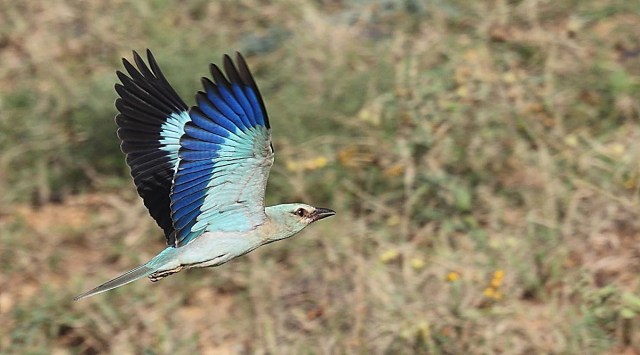 Passage Migrant Count (PMC) 2023 noted a spike in the numbers of European Rollers. (Credit: Sivaramakrishnan Shivsubramanian)
Passage Migrant Count (PMC) 2023 noted a spike in the numbers of European Rollers. (Credit: Sivaramakrishnan Shivsubramanian) Birdwatchers who participated in the Passage Migrant Count (PMC) 2023 in Kutch, which recently concluded, noted a spike in the numbers of European Rollers, a bright blue bird, apart from the Greater White Throats and the Common Cuckoos compared to last year, the provisional data revealed.
While the count of blue-cheeked bee-eaters and rufous-tailed scrub-robins dwindled, experts explained that this could be indications of different waves and peaks of migrations of birds that make stopovers in Kutch while migrating from their breeding grounds in eastern Europe and central Asia to their wintering grounds in Africa.
During the counting, held on September 23 and 24, birdwatchers counted a total of 694 European rollers, 58 greater white throats and 36 common cuckoos.
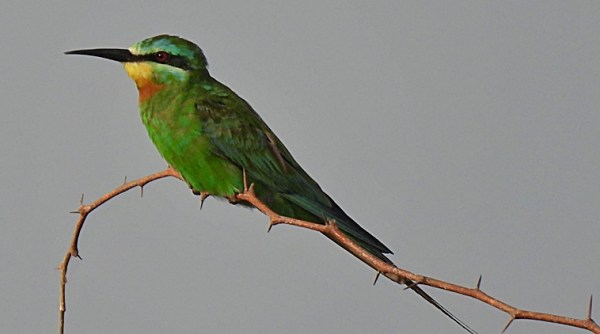 A blue-cheeked bee-eater. (Credit: Kalyani Kapdi)
A blue-cheeked bee-eater. (Credit: Kalyani Kapdi)
The corresponding numbers in PMC 2022 were 573, 41 and 29, respectively. However, the count of blue-cheeked bee-eaters, spotted flycatchers and rufous-tailed scrub-robins fell from 308, 124 and 70, respectively, to 238, 115 and 26, respectively.
The number of red-backed shrikes remained constant at 34 individuals while, as per the eBird trip reports of the count, the number of red-tailed shrikes fell from 35 to 20.

The Bird Conservation Society of Gujarat (BCSG) has been organising the count in collaboration with the Gujarat forest department and the Bird Count India (BCI) collective, a partnership of various Governmental and non-Governmental organisations working for the monitoring and conservation of birds and nature and environment in general, with an aim to assess the population of passage migrant birds and habitats they use within Kutch.
The PMC 2023 was coordinated by birdwatchers Kunan Naik, Arpit Deomurari, Mayuri Jani and Aamir Matli. Naik said that the focal eight species’ migration through Kutch was discussed by experts and the coordinators.
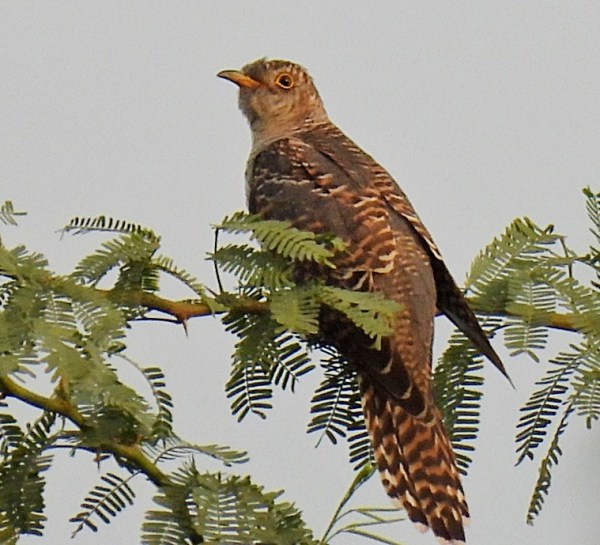 More numbers of common cuckoos indicate that their migration has begun but it is yet to peak, said Ashwin Viswanathan. (Credit: Kalyani Kapdi)
More numbers of common cuckoos indicate that their migration has begun but it is yet to peak, said Ashwin Viswanathan. (Credit: Kalyani Kapdi)
“Now with the advantage of having baseline data of PMC 2022, preliminary figures help us understand to certain degrees the migration of these eight species within Kutch. But we need to conduct this exercise for a few more years to identify trends of population and migration patterns,” said Naik.
The PMC, which was launched in 2022, has been focusing on eight passage migrant species. They are the European roller, blue-cheeked bee-eater, rufous-tailed scrub-robin, greater whitethroat, spotted flycatcher, common cuckoo, red-backed shrike and red-tailed shrike.
Talking to The Indian Express, Ashwin Viswanathan of the BCI said the 2022 count, (conducted on September 9 and 10, 2022) and the 2023 count (conducted on September 23 and 24), throw some light on passage migration and habitat use.
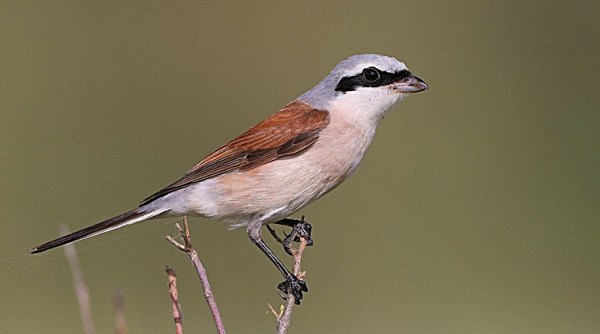 The number of red-backed shrikes remained constant at 34 individuals. (Credit: Nirav Bhatt)
The number of red-backed shrikes remained constant at 34 individuals. (Credit: Nirav Bhatt)
“The overall numbers of passage migrant birds counted during the PMC 2023 look similar to the PMC 2022 count. However, as per primary data, the number of European rollers, common cuckoos and greater whitethroats this year were many more than last year. However, the number of blue-cheeked bee-eaters and rufous-tailed scrub-robins were comparatively low this year. This indicates that European rollers may continue their passage migration through Kutch through September but blue-cheeked bee-eaters and rufous-tailed scrub robins may peak in migration earlier in September. More numbers of cuckoos indicate that their migration has begun but it is yet to peak,” said Viswanathan.
However, he said that different time periods and heavy rains in the days leading to the days when the 2023 count was conducted could also be factors affecting the count. “These numbers are those from the sample survey areas and we will extrapolate them in our analysis of the count to assess the total estimated population of passage migrant birds in Kutch,” he added.
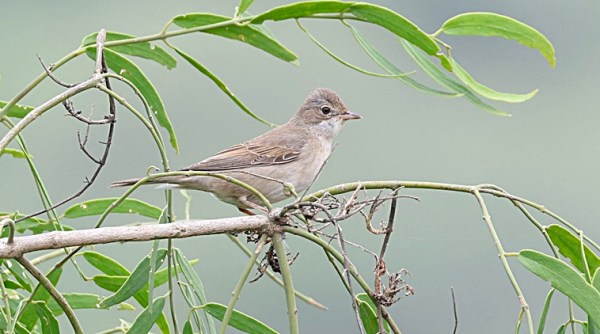 During the counting, held on September 23 and 24, birdwatchers counted 58 greater white throats (Credit: Madhav Murthy)
During the counting, held on September 23 and 24, birdwatchers counted 58 greater white throats (Credit: Madhav Murthy)
The PMC 2022 analysis report compiled by the BCI estimated the population of passage migrant birds in Kutch, which falls on the Central Asian Flyway and Asia-Africa Flyway, to be around four lakh birds.
However, red-tailed shrike was not included in the final analysis of data due to problems in identification of individuals encountered during the count.
Uday Vora, honorary secretary of the BSCG, said that the variation in numbers could be due to refinement in survey protocols.
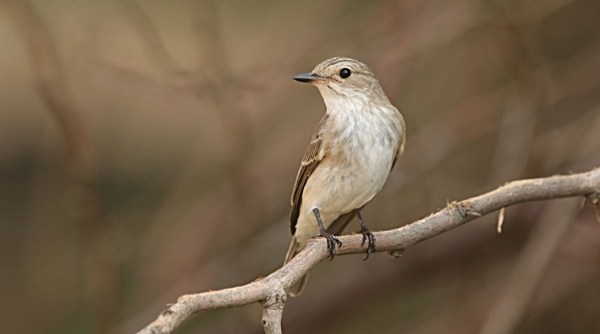 A spotted flycatcher (Credit: Vyom Vyas)
A spotted flycatcher (Credit: Vyom Vyas)
“The numbers look good overall. The fall could also be due to issues of access in some survey areas due to the rain,” Shantilal Varu, a veteran birdwatcher of Kutch who had joined the count informally said.
Viswanathan further said that the two counts have given some idea as to which species prefers which part of Kutch while making their passage through the district. “For example, greater whitethroats seem to pass through southwestern and western parts of the region like the grasslands and plains near Naliya. But rufous-tailed scrub robins seem to move through the central thorn forests. Red-backed and red-tailed shrikes used different parts of the district, red-backed more through the southwestern and western parts and red-tailed more through the northeastern (Banni) and eastern parts,” Viswanathan said.
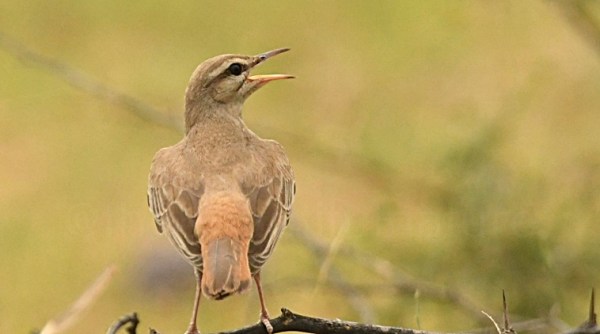 A Rufous-tailed scrub-robin (Credit: Sunanda Vinayachandran)
A Rufous-tailed scrub-robin (Credit: Sunanda Vinayachandran)
Overall, birds of more than 215 species were recorded, Viswanathan said, adding, “The number of European nightjars were high this year comparatively.”
This year, rosy starlings (4,787 individuals), greater flamingos (3,311 individuals), laughing doves (2,148), Asian green-bee-eaters (1,998), rock pigeons (1,663), common babblers (1,498), red-vented bulbul (1,310), white-eared bulbul (1,299), Eurasian collared doves (1,295), ashy-crowned sparrow lark (1,263) and baya weavers (1,155) were among the most abundant species.
Buzzing Now
May 04: Latest News
- 01
- 02
- 03
- 04
- 05





































